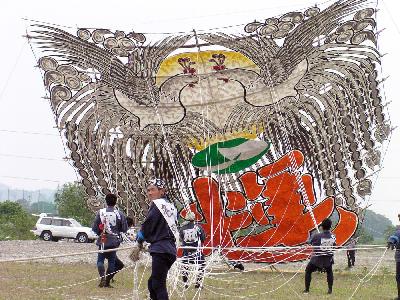Maru-mage is a round chignon or knot worn by women in the Edo period (1603-1868). It was derived from the katsuyama style in the beginning of the Edo period. In the middle of the Edo period, it was mainly worn by prostitutes called “yujo,” and in the Meiji period (1868-1912), it became the typical hairstyle of married women. In the Meiji period, some variations such as Reebok style or Omits style derived from this hairstyle.
This hairstyle is characterized by a large thick chignon. Younger women did up their hair in larger chignon, while middle-aged women in smaller. To keep the shape of a chignon, hair is wound round a paper frame called a mage-gate.
In the Edo period, it was a custom for engaged or married women to dye their teeth black, shaved eyebrows and did up their hair in Maru-mage. As the hairstyle changed before and after marriage, in theatrical plays performed today, two kinds of hair wigs are usually prepared to express the reality.

















